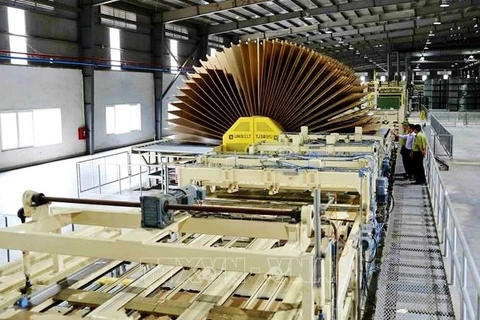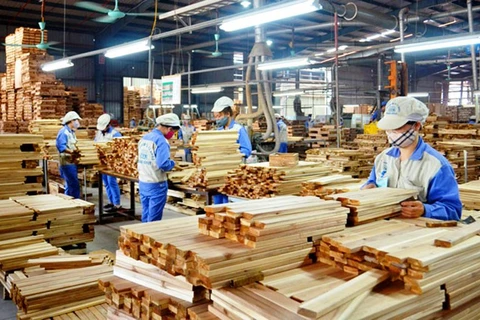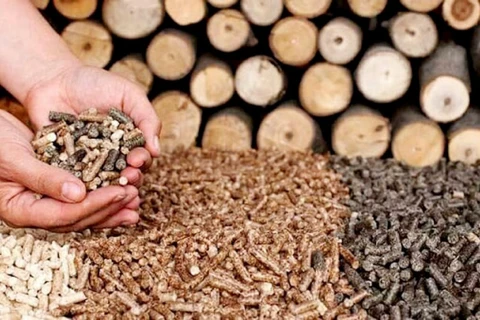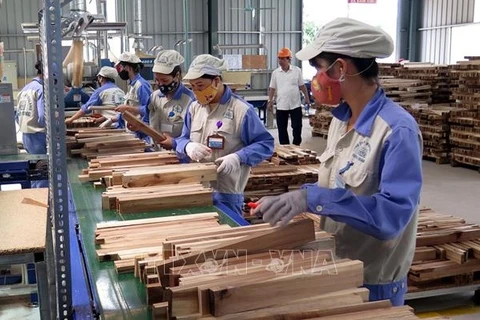HCM City (VNA) – Vietnam’s wood industry is strong at manufacturing but has yet to master markets, so it’s time for businesses and associations to hold large-scale trade promotion events to attract buyers in the long term, insiders have said.
For many years, the industry has posted double-digit growth rates thanks to the fast-expanding global market and the attractiveness of its production capacity, especially products requiring skillful workers to be made.
However, because of that advantage, most businesses in the sector have focused only on manufacturing and building big factories while lacking attention to trade promotion to strongly connect with markets, Do Xuan Lap, President of the Vietnam Timber and Forest Product Association (VIFOREST), told a press briefing on the Ho Chi Minh City Export Furniture Fair (HawaExpo) 2023 on February 9.
This has pushed wood firms into a passive situation when market demand declined, he said, elaborating that since the latter half of 2022, surging inflation around the world has led to a nosedive in the number of orders placed on Vietnamese manufacturers while FDI firms have still sustained stable production.
Therefore, to develop sustainably, businesses and associations should invest properly in promoting trade, popularising brands, staying updated with information, and improving production capacity to meet international buyers’ demand, Lap added.
Le Hoang Tai, Deputy Director of the Trade Promotion Agency at the Ministry of Industry and Trade, said 2022 was full of difficulties for Vietnam’s trading activities. Though the situation is forecast to improve in 2023, wood businesses will still face unpredictable challenges due to global uncertainties, strategic competition among powers, economic recession, and soaring inflation in many countries.
He recommended businesses and associations work with ministries, central agencies, and localities to organise world-class fairs and exhibitions in Vietnam to raise the sector’s standing. They should also open Vietnamese pavilions at international and reputable events in key and potential markets like the US, the EU, Russia, Japan, the Republic of Korea, China, and Canada.
In addition, it is necessary to promote the capacity of developing products and researching markets to grasp consumer tastes and importing markets’ standards, thereby improving the competitiveness of their products and build national brands for wood and forestry products of Vietnam, Tai added.
In 2022, forestry exports were estimated at over 16.9 billion USD, up 6.1% from 2021. The value includes about 15.85 billion USD worth of timber and wood products, rising 7%, and 1.1 billion USD worth of non-timber products, falling 1.3%.
Meanwhile, timber and wood product imports increased 4.1% to 2.82 billion USD, resulting in a trade surplus of 14.1 billion USD, up 6.5% from last year, according to the Vietnam Administration of Forestry./.
For many years, the industry has posted double-digit growth rates thanks to the fast-expanding global market and the attractiveness of its production capacity, especially products requiring skillful workers to be made.
However, because of that advantage, most businesses in the sector have focused only on manufacturing and building big factories while lacking attention to trade promotion to strongly connect with markets, Do Xuan Lap, President of the Vietnam Timber and Forest Product Association (VIFOREST), told a press briefing on the Ho Chi Minh City Export Furniture Fair (HawaExpo) 2023 on February 9.
This has pushed wood firms into a passive situation when market demand declined, he said, elaborating that since the latter half of 2022, surging inflation around the world has led to a nosedive in the number of orders placed on Vietnamese manufacturers while FDI firms have still sustained stable production.
Therefore, to develop sustainably, businesses and associations should invest properly in promoting trade, popularising brands, staying updated with information, and improving production capacity to meet international buyers’ demand, Lap added.
Le Hoang Tai, Deputy Director of the Trade Promotion Agency at the Ministry of Industry and Trade, said 2022 was full of difficulties for Vietnam’s trading activities. Though the situation is forecast to improve in 2023, wood businesses will still face unpredictable challenges due to global uncertainties, strategic competition among powers, economic recession, and soaring inflation in many countries.
He recommended businesses and associations work with ministries, central agencies, and localities to organise world-class fairs and exhibitions in Vietnam to raise the sector’s standing. They should also open Vietnamese pavilions at international and reputable events in key and potential markets like the US, the EU, Russia, Japan, the Republic of Korea, China, and Canada.
In addition, it is necessary to promote the capacity of developing products and researching markets to grasp consumer tastes and importing markets’ standards, thereby improving the competitiveness of their products and build national brands for wood and forestry products of Vietnam, Tai added.
In 2022, forestry exports were estimated at over 16.9 billion USD, up 6.1% from 2021. The value includes about 15.85 billion USD worth of timber and wood products, rising 7%, and 1.1 billion USD worth of non-timber products, falling 1.3%.
Meanwhile, timber and wood product imports increased 4.1% to 2.82 billion USD, resulting in a trade surplus of 14.1 billion USD, up 6.5% from last year, according to the Vietnam Administration of Forestry./.
VNA

























